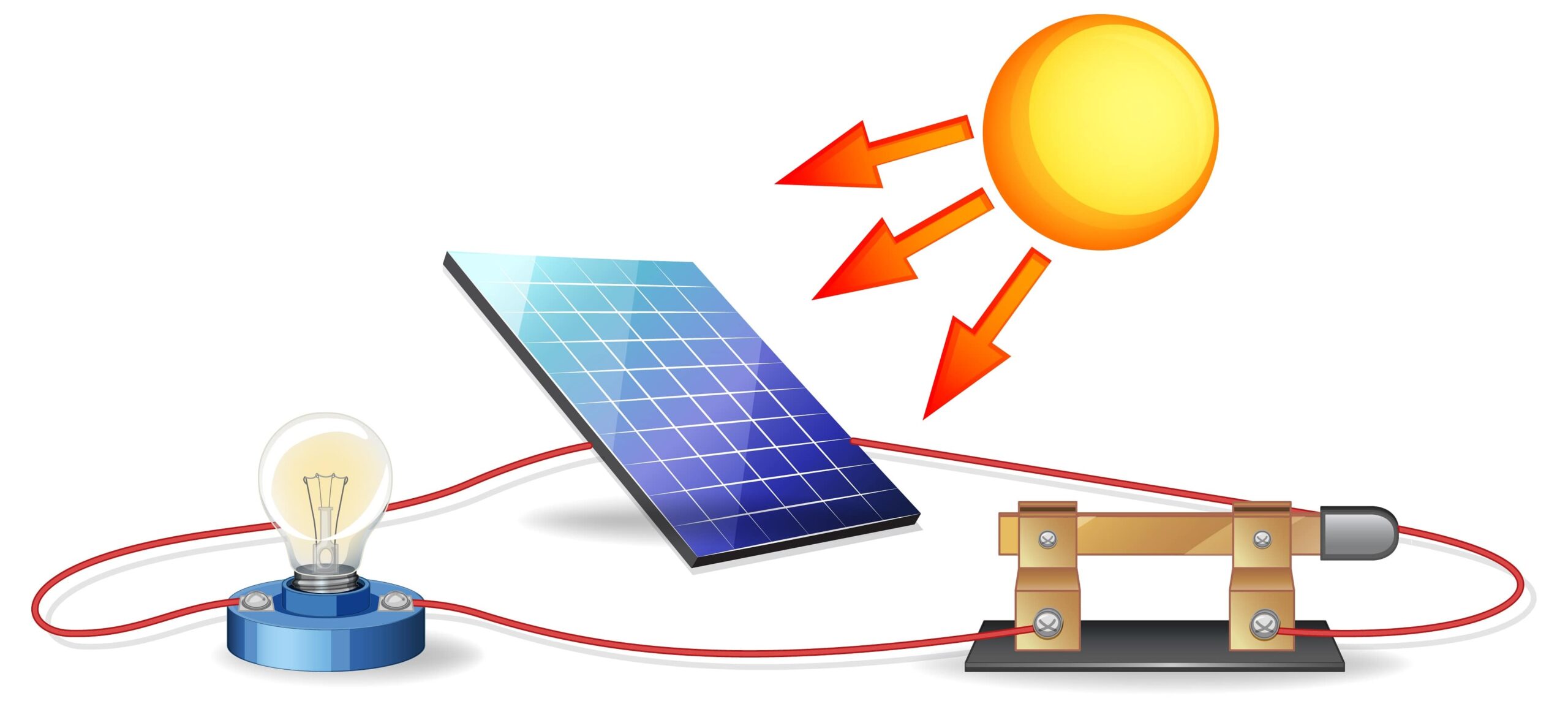Home » Hybrid Thermionic-Thermophotovoltaic Conversion device

There are two different approaches for converting solar energy into electrical energy. Photovoltaic cells may convert solar energy directly into electricity, and CST can do it indirectly by employing power conversion cycles. However, conversion of thermal energy directly into electrical energy is a difficult task. There are two main high-temperature solid state devices, namely: thermionics (TI) and thermophotovoltaics (TPV) which can convert heat to electricity.
The main disadvantage of both converters is low output voltage. TIPV is a device that combines two sub-devices thermionics (TI) and thermophotovoltaic (TPV) energy converters into a single unit and uses thermoelectric and photovoltaic phenomena to convert thermal energy to electricity. Compared to single converters running independently, this may boost the density of the electrical power generated. This particular technology is considered as thermionic solar conversion i.e. the current is released from the electrode to the cold anode over a very long order of distance (0.1-100 μm) and energy is generated directly from the heat through vacuum. TIPV accelerates energy removal and enhances heat transport by using electrons and photons.
The TI emitter can be heated directly by a heat energy source such as waste heat, a solar concentrator, or phase transition material because thermionic emissions of metals only become significant at temperatures above 1000°C. Metal PCMs with high temperatures can be used for this. The optimum material for a TIPV anode or high temperature storage can be thought of as silicon because of its high latent heat (1800 kJ/kg) and high melting point (1414°C). Additionally, silicon containers create a favorable channel for the propagation of electrons, as well as photons and electrons, towards the TIPV anode. Silicon thus emerges as a suitable phase transition material for merging HT-LHS with TIPV based on the observed features. The ability of thermionic energy converters to be combined with other technologies in order to capture the greatest amount of thermal energy not utilized by individual systems further adds to their appeal. This allows for the creation of new devices that will improve power generation.

Figure: Schematic of Hybrid thermo-photovoltaic device
As shown in Figure above, TIPV converter generally comprise of an emitter, a collector and TPV cell. The emitter releases a number of electrons and photons after being heated up by an outside source. Between the emitter and the TPV cell, which absorbs electrons, lays the collector. The creation of electricity is caused by photons, which are transported to the TPV cell via the collector. TIPV devices can be set up in one of two ways: a two-terminal system or a three-terminal system. In two terminal TIPV converters, TI and TPV sub-devices are coupled in series. As an outcome, the current from both devices is the same, which reduces the complexity of the overall layout of the hybrid device.
Advantages of TIPV Technology:
A series of advantages can be offered by TIPV technology compared with other heat engines:
A wide range of TIPV technology applications, including heat recovery from high temperature industrial processes, combined heat and power for residential use, solar power, and energy storage systems, have been made available by the aforementioned advantages paired with the numerous potential sources of heat.
RECENT POSTS
CATEGORIES
TAGS
Agriculture Agriculture future AI Architecture artificial intelligence Bachelor of Commerce BA English BA Psychology BTech AIML BTech CSE BTech cybersecurity BTech Engineering Business management career Career-Specific Education career guide career option career scope Civil engineering commerce and management Computer Science Computer science engineering Data science degree education Engineering Engineering students English Literature english program Fashion Design Fashion design course Higher Education Journalism journalism and mass communication law Law career Machine Learning mathematics MBA MBA specialization Mechanical Engineering Pharmacy Psychology Research and Development students
Nachauli, Jasana Road, Faridabad, Haryana
Address: C-72, Second Floor, Shivalik, Near Malviya Nagar,
Above HDFC Bank, New Delhi 110017
Landline No. - 011-46570515 / 45138169 / 41755703
Mobile No. - +91-7303152412 / +91-7303152420 / +91-9311321952
Toll Free: 1800-120-4613
Mobile : 8447744303 | 8447744304 | 8447744306 | 8447744309
8700003974 | 8700003411 | 8700003749
Copyrights © 1998 - 2026 Lingaya's Vidyapeeth (Deemed To Be University). All rights reserved.
LV only conducts physical/online verification of any document related to examination on the following email id:
It is important to note that the following email IDs and domains are fraudulent and do not belong to our university.